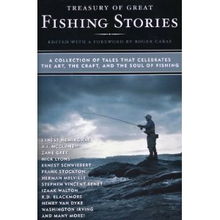Introduction:
Fishing is an ancient pastime that requires patience, skill, and a keen eye for detail. One of the most crucial aspects of a successful fishing trip is choosing the right spot. In this comprehensive guide, we will delve into the art of finding the perfect fishing location, providing you with a step-by-step approach and a visual guide to help you master the technique.
Step 1: Research the Location
Before setting out on your fishing adventure, it's essential to research the area you plan to fish. This includes understanding the local fish species, the best times to fish, and the regulations in place. Here are some tips to help you get started:
- Local Knowledge: Talk to local anglers or fisherman at the tackle shop. They can provide valuable insights into the best spots and techniques for the area.
- Online Resources: Utilize online forums, fishing apps, and websites that offer maps and information about fishing spots.
- Government Websites: Check out state or federal fish and wildlife websites for detailed maps and regulations.
Step 2: Analyze the Map
Once you have a general idea of the area, it's time to analyze the map to identify potential hotspots. Here's how to do it:
- Identify Water Features: Look for rivers, lakes, streams, and ponds. These are natural habitats for fish.
- Observe the Shoreline: Note any points, rocks, or submerged structures that can create fish-holding areas.
- Check for Vegetation: Dense vegetation can provide cover for fish, making it an ideal spot to cast your line.
- Consider Depth: Fish often congregate in areas with varying depths, so look for areas where the depth changes gradually.
Step 3: Visual Guide to Finding the Perfect Fishing Spot
To help you visualize the process, here's a detailed map of a hypothetical lake, highlighting potential fishing spots:
[Insert a detailed map of a lake with marked spots, including rivers, points, rocks, vegetation, and depth changes]

Step 4: Assess the Weather and Water Conditions
The weather and water conditions can significantly impact your fishing success. Here's what to consider:
- Wind: Wind can affect the way fish behave. Strong winds can spook fish, while gentle breezes can stir up food sources.
- Water Temperature: Fish are more active in warmer water, so consider the temperature when choosing your spot.
- Water Clarity: Clear water can be challenging to fish in, as fish may be more cautious. However, certain fish species, like trout, thrive in clear water.
Step 5: Set Up Your Equipment
Once you've found a promising spot, it's time to set up your equipment. Here are some tips to ensure you're prepared:
- Choose the Right Bait: Research the species you're targeting and select the appropriate bait or lure.
- Tune Your Gear: Make sure your fishing rod, reel, and line are in good condition and properly matched for the species you're fishing.
- Adjust Your Tackle: Consider the depth and structure of the water when choosing your tackle.
Step 6: Cast and Wait
With your equipment set up, it's time to cast your line. Here are some tips to improve your chances:
- Cast with Precision: Aim for areas where you've observed fish activity.
- Be Patient: Wait for the fish to bite. Avoid reeling in too quickly, as this can spook the fish.
- Adjust Your Technique: If you're not getting bites, try changing your bait, lure, or technique.
Conclusion:
Finding the perfect fishing spot is a combination of research, analysis, and a bit of luck. By following these steps and utilizing the visual guide provided, you'll be well on your way to mastering the art of finding the best fishing spots. Happy fishing!












